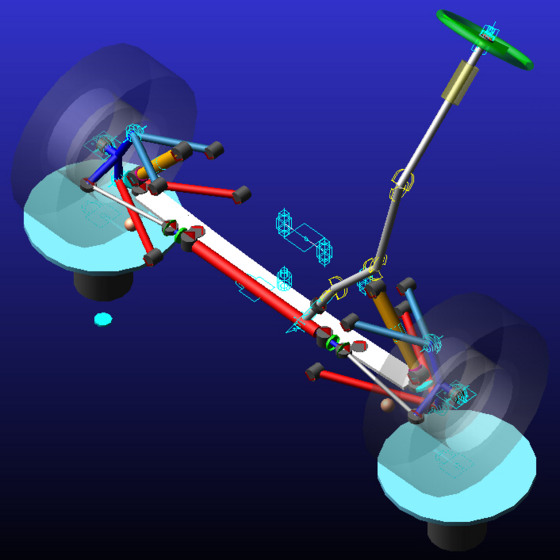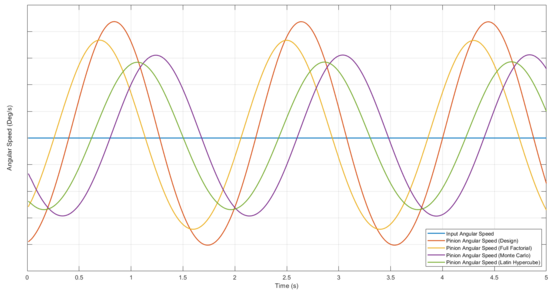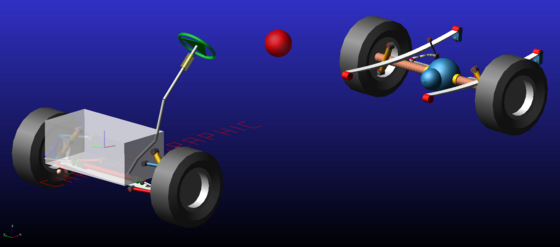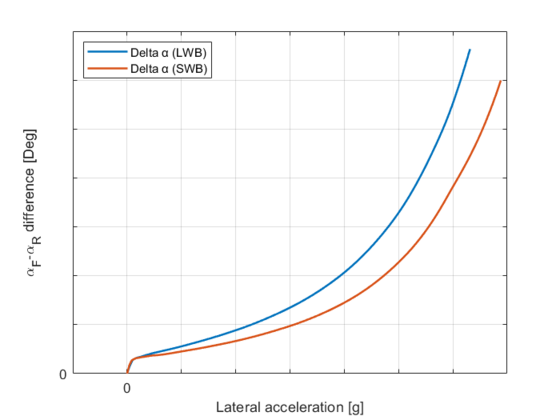Multi-Body modelling and mechanical analysis of a steering system adopted on a light-duty commercial vehicle
Politecnico di Torino
Contact us
The work performed in this study followed the need of developing a multi-body model for a light-duty commercial vehicle steering system.
This study was performed in partnership with Iveco Group, which provided the necessary data on the vehicle in analysis, an Iveco Daily 35S.
The modelling work was focused on the steering system: On a first stage the system was modelled starting from data available from the manufacturer; After this phase the system was implemented into a full vehicle model that was provided beforehand.

The system in study consisted of four shafts connected by three universal joints. It was important to study the degree of motion irregularity of the steering system: For this reason, the phase angles of each joint were implemented parametrically, and an optimization analysis was carried out through Adams Insight.

In order to minimize irregularity, the optimization objective was set as the minimization of the RMS value of the output angular velocity. Different experiment methods were used, the Latin Hypercube method delivered the best results in terms of irregularity reduction.
The first part of the study, also considering the optimization phase, was carried out on steering tests on the front suspension. Parallel and opposite wheel travel tests were carried out to have an idea on the geometries of the suspension over changing travel conditions.

To fully validate the model analyses were carried out on the complete vehicle: A ramp steer, a step steer and a sweep steer test were considered.

The analysis on the ramp steer enabled the evaluation on the vehicle’s cornering performances: A comparison was performed between a short wheelbase fully loaded vehicle and a long wheelbase unloaded vehicle. The shorter vehicle resulted in a less understeering behaviour which was expected.
The test proceeded analysing how changes in static camber and toe angle could affect the vehicle performance. A comparison on camber and toe values with the results from the static tests was also performed: Showing a good relationship between the results from the ramp test and the results from the static ones.

From the test on step steer an analysis on vehicle stabilization capability was obtained, showing mainly the differences between the two suspensions analysed: A double wishbone at the front and a solid axle at the rear.
At last, a brief analysis on sweep steer was carried out: The frequency response of different parameters, such as lateral acceleration, yaw rate, side-slip angle, and roll angle , with respect to steering wheel angle was evaluated.

All the results were post-processed using MATLAB.
This study was mainly aimed at defining the most important parameters to evaluate when validating a multi-body model in terms of dynamic behaviour. It is also a starting point for an in-depth comparison between all the different configurations that are included in a crowded line-up such as the one of the Iveco Daily.
Autore: Felice Romano
Relatore: Enrico Galvagno
AA: 2021/2022